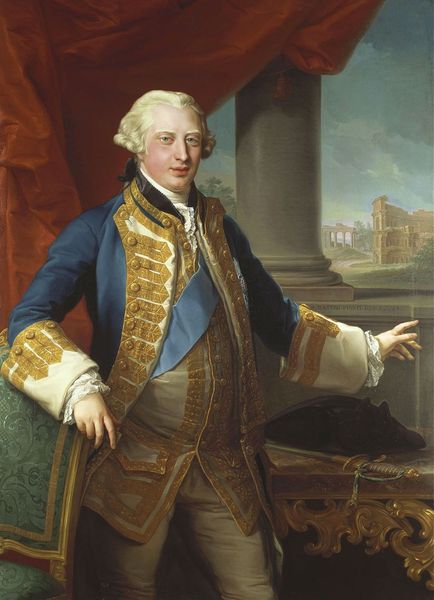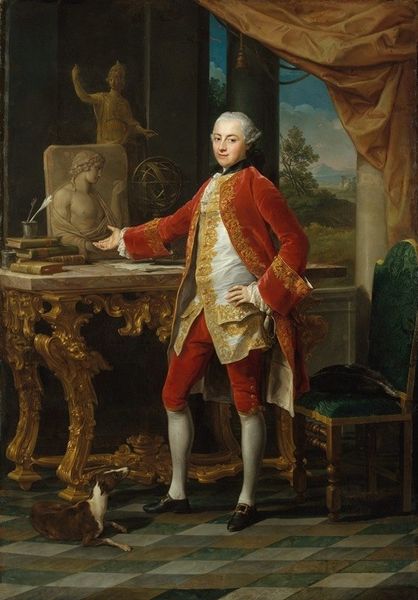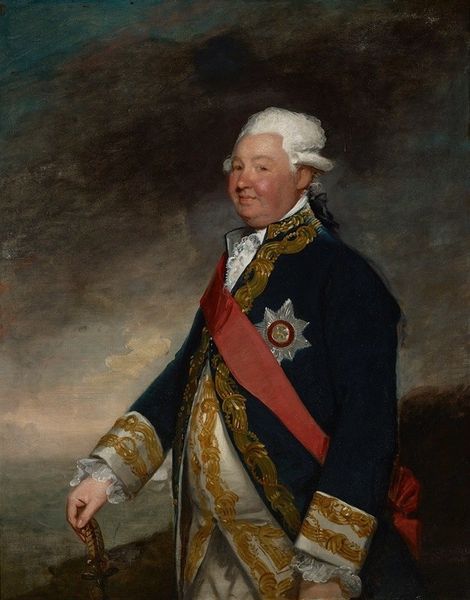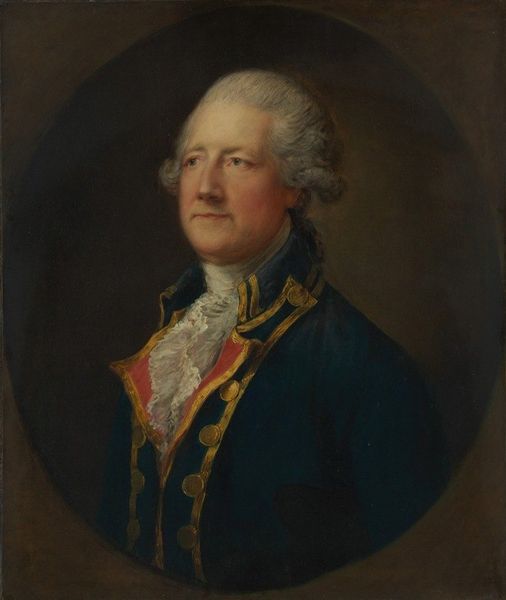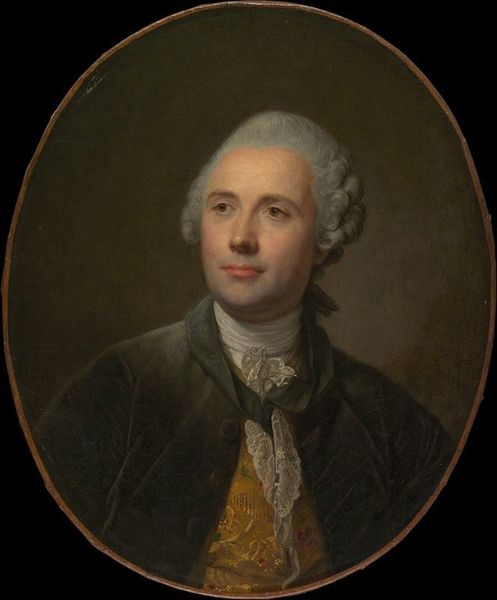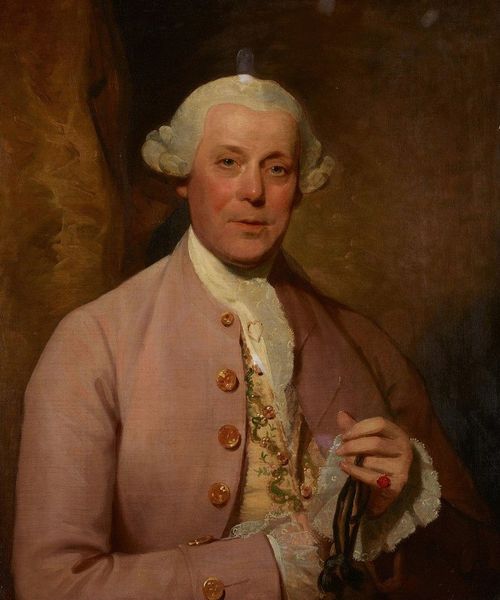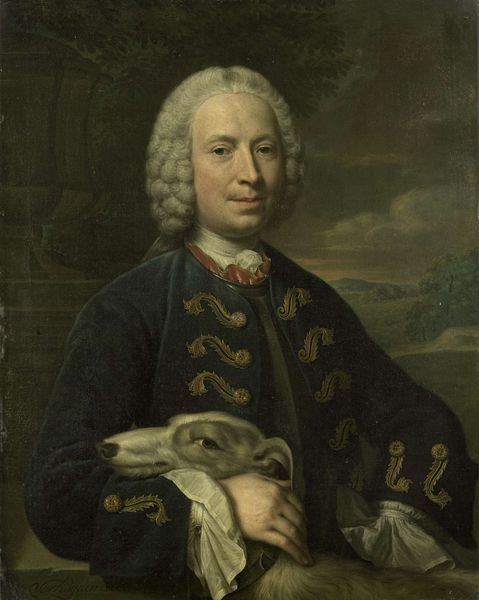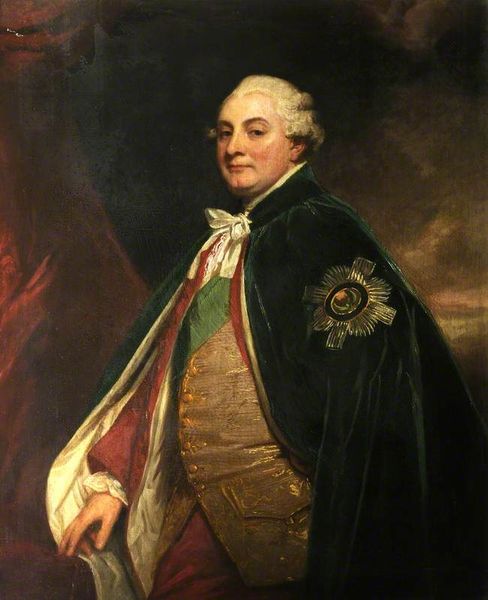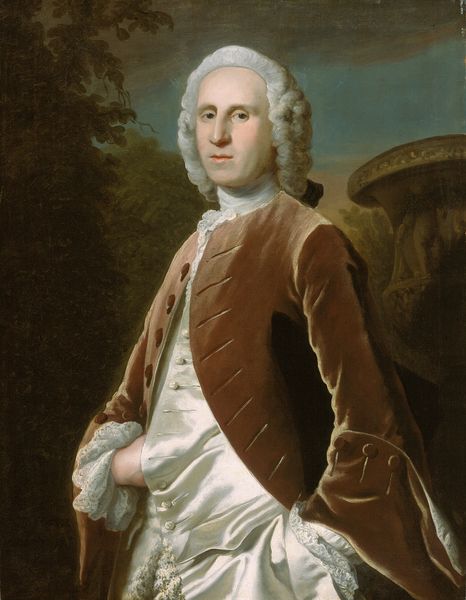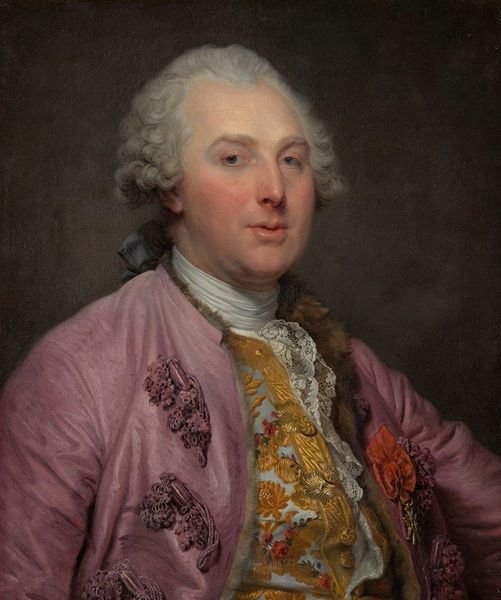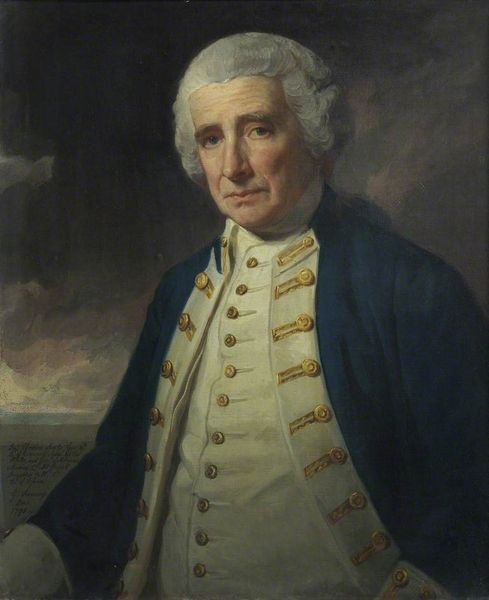
Heinrich Graf Von Brühl 1753
0:00
0:00
marcellobacciarelli
Gemäldegalerie Alte Meister, Dresden, Germany
oil-paint
#
portrait
#
baroque
#
oil-paint
#
oil painting
#
history-painting
Copyright: Public domain
Curator: This oil on canvas portrait is titled "Heinrich Graf Von Brühl," painted in 1753 by Marcello Bacciarelli. Editor: My first thought is, quite flamboyant. The stark red of his coat jumps out against the muted background. There’s almost a theatrical quality to the pose, the gesture of his hand, that feels quite Baroque. Curator: Absolutely. Let's delve into that theatricality. Consider how Bacciarelli uses color and light to guide the viewer’s eye. The vibrant red draws us in, then the eye travels to the intricate gold detailing, down to the symbols of office scattered on the table. It's all carefully orchestrated to convey power. Editor: It’s interesting to me what is on that table, a helmet and a letter, especially given Brühl's historical context. He was, shall we say, not primarily known as a military leader. The letters and the armor are there for what purpose, really? How was Brühl’s authority maintained and through what power structure? Curator: Indeed, Brühl’s historical reputation for excess and manipulation casts a long shadow over this portrait. It seems Bacciarelli aimed to convey authority and sophistication through the sitter's elegant bearing, not to represent accurate power dynamics. Look at the textures, from the fur trim to the gleaming armor—it's all surface, perhaps a deliberate construction of an ideal image. Editor: And there's that pointing finger again. It seems every dignitary and noble uses that gesture, signaling, presumably, where their desires and demands are to be immediately actioned upon. It tells you something about their worldview. What sort of statement would Brühl think this portrait was sending? Curator: A carefully curated one, to be sure. It's a study in surfaces, suggesting how visual language was deployed to shore up authority. Editor: Ultimately it highlights the way portraiture, particularly in this period, served as both record and active agent within networks of power and influence. A glimpse into 18th-century image management! Curator: Yes, it urges us to look beyond the finery and consider what those visual choices truly communicate, and what is glossed over, through their omission.
Comments
No comments
Be the first to comment and join the conversation on the ultimate creative platform.
